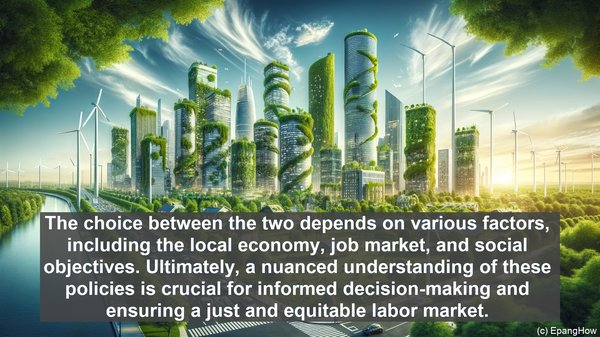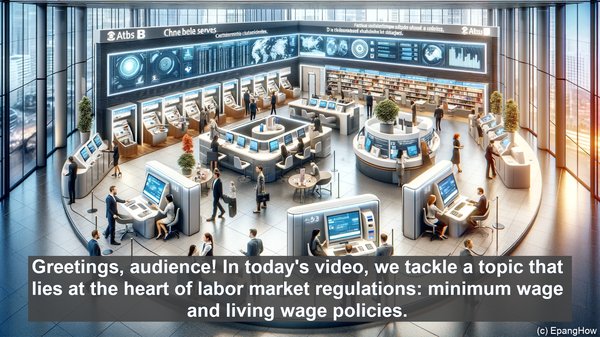Introduction: The Importance of Fair Compensation
Greetings, audience! In today’s article, we tackle a topic that lies at the heart of labor market regulations: minimum wage and living wage policies. As the world evolves, so do the dynamics of work and income. These policies aim to ensure fair compensation, but they differ in their approaches and implications. Let’s dive in!
Minimum Wage: A Foundation for Fair Pay
Minimum wage refers to the legally mandated lowest hourly rate an employer can pay their employees. Its primary objective is to prevent exploitation and ensure a baseline standard of living. Governments periodically review and adjust this rate to account for inflation and changing economic conditions. While minimum wage policies vary across countries, they commonly target entry-level positions and industries with historically low wages.
Living Wage: A Holistic Approach to Income
Living wage, on the other hand, goes beyond the minimum. It considers the cost of living in a specific area, accounting for factors like housing, healthcare, and transportation. The aim is to provide employees with an income that not only meets their basic needs but also allows for participation in the community and a decent quality of life. Living wage policies often apply to a broader range of jobs, including those that require higher skills or experience.

Impacts on Workers and Businesses
Both minimum wage and living wage policies have their effects on workers and businesses. For workers, an increased minimum wage can provide immediate relief, lifting them out of poverty or reducing income inequality. However, it may also lead to potential job losses, as businesses, especially smaller ones, may struggle to afford higher labor costs. Living wage policies, while more comprehensive, can face similar challenges, albeit to a lesser extent, as they often involve higher wage thresholds.
Economic Considerations: Balancing Act
From an economic standpoint, minimum wage policies can stimulate consumer spending, as workers have more disposable income. This, in turn, can boost demand and potentially drive economic growth. However, critics argue that it may also result in higher prices for goods and services, as businesses pass on the increased costs. Living wage policies, with their focus on a higher income threshold, can have a more pronounced impact on business viability, particularly for smaller enterprises.

